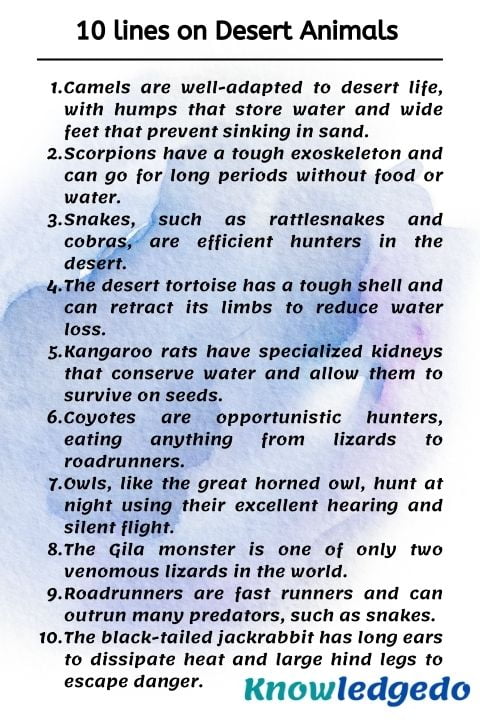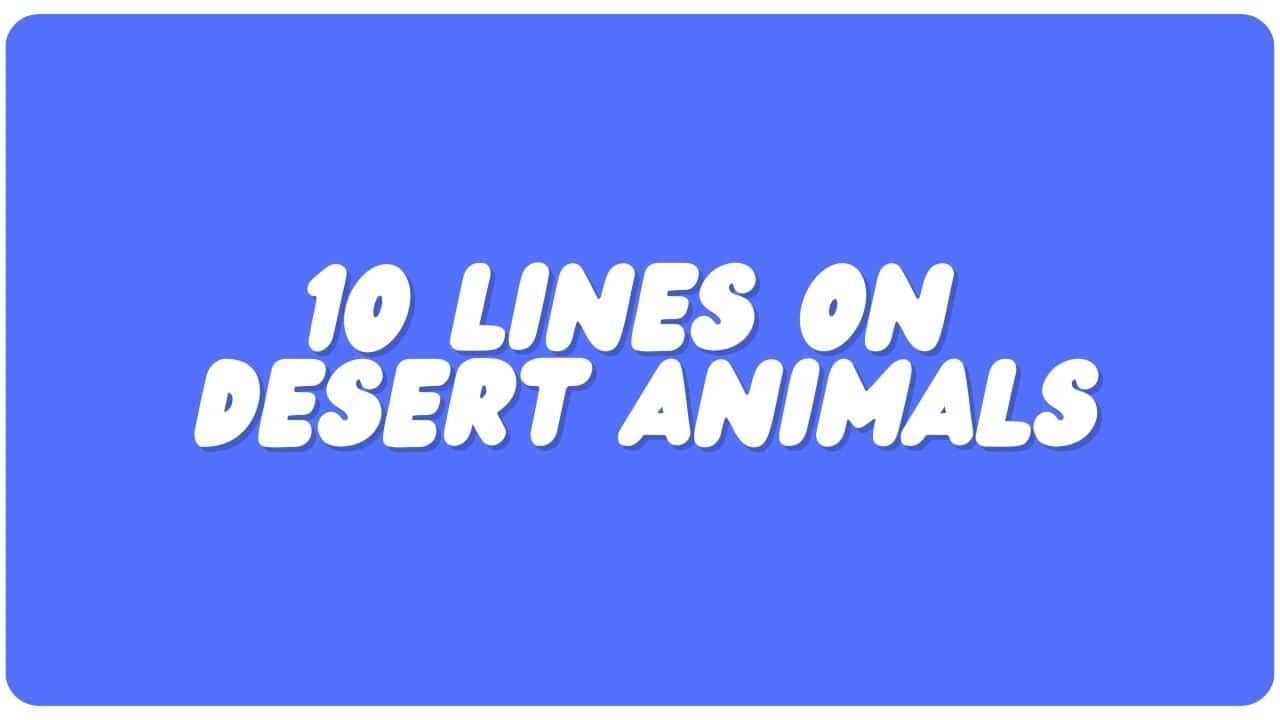Today, we are sharing 10 lines on Desert Animals in English. This article can help students who are looking for information about 10 lines on Desert Animals. This essay is very simple and easy to remember. The level of this essay is moderate so any student can write on this topic.
This article is generally useful for class 1,class 2,class 3,class 4,class 5,class 6,class 7,class 8,class 9,class 10,class 11,class 12
10 lines on Desert Animals
1) Camels are well-adapted to desert life, with humps that store water and wide feet that prevent sinking in sand.
2) Scorpions have a tough exoskeleton and can go for long periods without food or water.
3) Snakes, such as rattlesnakes and cobras, are efficient hunters in the desert.
4) The desert tortoise has a tough shell and can retract its limbs to reduce water loss.
5) Kangaroo rats have specialized kidneys that conserve water and allow them to survive on seeds.
6) Coyotes are opportunistic hunters, eating anything from lizards to roadrunners.
7) Owls, like the great horned owl, hunt at night using their excellent hearing and silent flight.
8) The Gila monster is one of only two venomous lizards in the world.
9) Roadrunners are fast runners and can outrun many predators, such as snakes.
10) The black-tailed jackrabbit has long ears to dissipate heat and large hind legs to escape danger.

5 lines on Desert Animals
1) Camels are well adapted to the desert with humps that store water and wide feet that prevent sinking in sand.
2) Desert tortoises have tough shells and can retract their limbs to conserve water.
3) Kangaroo rats are able to survive on seeds and have specialized kidneys to conserve water.
4) Snakes, such as rattlesnakes and cobras, hunt in the desert using their speed and venom.
5) Roadrunners are fast runners that can outrun predators, such as snakes, and hunt for small prey.
FAQ
Answer: Camels have humps that store water and wide feet to prevent sinking in the sand. They also have thick fur to protect them from the sun and the ability to close their nostrils to keep out sand.
Answer: Desert tortoises have tough shells for protection and can retract their limbs to reduce water loss. They also burrow underground to escape the extreme heat and conserve moisture.
Answer: Kangaroo rats obtain water from the seeds they eat and have specialized kidneys that conserve water. They are able to survive in the desert without drinking free water.
Answer: Snakes play an important role as predators in the desert ecosystem, helping to control populations of small mammals and birds. Some species, such as rattlesnakes and cobras, are also important prey for other animals, such as hawks and owls.
